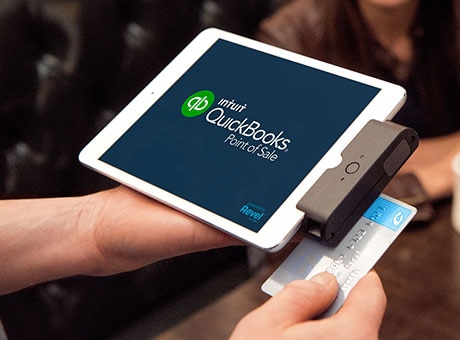Whether you are a small business owner, a freelancer, or an independent contractor, you should consider accepting credit cards from your clients. This form of payment is arguably more prominent and more useful than any other single type of payment. Understanding why and how to accept credit cards simplifies the process if you decide to add this payment option.

A Complete Guide to Dealing With Credit Card Payments
Your Clients Use Credit Cards
One of the biggest reasons to accept credit cards is because your clients use them. By expanding to accept credit cards in addition to other payment methods, you give your customers options. They have the flexibility to pay how they want when purchasing your goods or services. Some people don’t carry cash on a regular basis, or if they do have cash, they’re limited to the amount they have on hand. However, most people keep their credit cards in their wallets at all times. When you accept credit cards, your customers can make larger purchases conveniently.
Anyone Can Accept Credit Cards
Numerous apps and services make it easy for anyone, regardless of the size of their business, to accept credit cards. Depending on your volume of monthly transactions and the credit card processor you select, you can opt to pay a small monthly fee, a percentage of each sale, or a combination of these billing options. Best of all, you don’t need special equipment. Companies such as Square provide you with a card reader that connects to your phone. Even traditional banks offer similar services. For example, Chase Canada can help you set up credit card payments on your website. This makes it easy to accept credit card payments in person or online without expensive or bulky equipment.
Credit Invoices to Streamline Billing and Accounting
Rather than just accepting credit cards, you can make them an integral part of your billing process. Services such as QuickBooks Payments allow you to set up invoices and email them to your clients. To pay the invoice using credit or ACH transfers, your clients simply hit a payment link on their smartphones, tablets, or laptops. The program updates your accounting records accordingly. This invoicing system streamlines accounting, reduces errors, and speeds up the billing process, especially compared to waiting for a paper cheque.
Diversified Payment Options to Stay Competitive
Accepting credit cards can make payments easier for you and your clients, but taking this type of payment can also help you remain competitive in your industry. If most of the other professionals in your niche accept credit cards, you’re at a disadvantage if you don’t. Unfortunately, if all other factors are equal, clients may choose your competitors if their payment process is easier than yours. Luckily, it’s fairly simple to accept credit cards in person, on your website, or through credit invoices.
Choosing a Credit Card Processor
Once you decide you want to accept credit cards, you need to choose a processor. Not all merchant service providers (MSPs) are created equal, and some are easier to work with than others. In selecting an MSP, you should be prepared to evaluate several before making a final decision. Asking key questions when you’re choosing an MSP helps you narrow down your options and make the best choice.
Cost Considerations
Your MSP can charge quite a few fees, and not all fees apply equally to all accounts. Basic fees associated with all accounts include the discount fee, which is the fee charged by the processor per transaction, and the statement fee for generating your monthly statement. You should also be aware of a monthly minimum formula, which can trigger a fee if your transaction totals don’t hit a minimum threshold. Other fees that can be applied are over-limit fees, voided transaction fees, and debit card fees. It’s important to determine precisely how these fees may be applied in your particular business situation.
When evaluating the costs, ask questions including:
- What are the service fees, costs-per-transaction, and fees applied by credit card companies?
- Is there a monthly service fee on top of the percentage charged?
- Is there a monthly minimum?
- What is the charge for premium cards, such as loyalty, reward and silver/gold/platinum/etc. cards, which often come with a higher fee?
- Are you required to use (i.e. rent or buy) a provided terminal? If so, what is the cost?
- If you input transactions online or over the phone without the card being present, is there a separate or extra processing charge per transaction?
- What happens after a customer dispute? How are refunds handled? Can you speak to the provider?
When pricing equipment, find out what add-ons may be required that aren’t included in a basic package, such as printers, check readers, or pin pads. Some MSPs offer a lease plan, which may appear attractive if you don’t have the funds up front. The total lease costs are typically much higher than outright purchase of the equipment.
Benefits Offered by MSPs
It’s also important to look at the benefits you get from the credit card company. That might include a free device for swiping your customers’ credit cards or smartphone apps to managing credit card payments. Receipt handling is another potential perk. Some processors automatically print or email receipts to customers and send a copy to you as the merchant. You should also check on how quickly payments hit your bank account once you process them. Getting your money as fast as possible helps your cash flow.
Contract Ending or Cancellation
Knowing what you’re getting into in terms of your MSP contract may not cross your mind initially, but it’s important to know what happens when the contract comes to an end. You first need to know if you have to sign a contract and the length of the contract if you do. Ask what happens at the end of the contract term. Perhaps it automatically renews if you don’t cancel it before it ends. You should also look into what happens if you want to cancel the contract early. Some processors might charge fees or penalties for an early contract cancellation.
Merchant Rights
All payment card networks in Canada (including Visa, MasterCard, American Express, Interac, and others) now adhere to the Code of Conduct for the Credit and Debit Card Industry in Canada, which was introduced by the Federal Government in 2010. This Code of Conduct includes some important rights for merchants, including:
- Easy-to-understand, detailed, and transparent merchant agreements and monthly statements, including rates charged for each type of payment card, as well as the total fees for each rate
- Payment card websites must show all fees
- Payment card networks need to ensure merchants receive a minimum of 90 days notice of upcoming fee increases or new fees
- Merchants who receive notice or new or increased fees can cancel their contracts without penalty within 90 days of receiving this notice, even if they’re in a long-term contract
Online Payment Setup
If you plan to offer online sales, you need a setup on your website that lets customers pay at checkout. Your provider should be able to help you with the process to get this started. The MSP provides you with access to its secure server, which lets you display a secure server certification on your website, and a gateway. Most MSPs also provide you with payment collection tools, such as a shopping cart where buyers go to complete their orders. If you find that your potential MSP outsources any of these, you should probably continue your search.
Payment Handling
The MSP provides you as the merchant with an electronic terminal or access to an online processing tool that interacts with the credit card authorization centres. When you enter and authorize a transaction, the system holds the funds for your account. Once you close out the day’s transactions, the system releases the funds and transfers them to your bank account in the next couple of days. Ask potential processing companies to explain the exact process they use for handling payments, including the hold time before you get your funds.
Value of a Particular Company
The MSP arena is highly competitive, and MSPs must find ways to add value to win your business. If you limit your criteria to pricing, you may miss out on some MSPs that offer superior customer service, technical assistance in setting up your e-commerce site, service upgrades, and discounts for referred business. Credit card processing fees are a necessary cost of doing business. With each swipe of a card, you pay a fee, which doesn’t break your profits on each individual transaction. The fees can mount up over the course of a month and become a significant business expense. For a fledgling business, every cent counts towards profitability, so it’s important to reduce your processing costs.
Understanding Your Processing Costs
The card processing industry contains complicated fee structures that can put small businesses at the mercy of their MSP. It’s important to understand the fee structure and how parties share in it to create your end cost. The wholesale rate at which fees are charged, also known as interchange fees, aren’t secret. They’re published for all to see, but the card processors don’t always tell you that. These fees, which account for about three-quarters of the total cost of processing, are fixed for all credit card processors, so they can’t be negotiated.
Card network providers, such as Visa and MasterCard, charge assessment fees which comprise about 3 to 5% of the processing expense. They’re also not negotiable. The card processor makes its money primarily on the markup over and above the interchange and assessment fees. This is where you may have some negotiating room, depending on your sales volume and your willingness to push the issue. The markup of the more competitive processors is somewhere between 15 and 20% of the total processing costs. The markup becomes your true basis for comparing card processors. It’s also important to know how the processor charges a markup fee. Often, they bundle their fee with the interchange and assessment fee, which can result in a higher overall fee expense to you.
Lower Processing Costs
Whether you’re new to card processing or intent on lowering your processing costs, you have some options in cutting expenses. Ask for interchange plus pricing. This makes charges more transparent, because the company charges interchange and assessment fees directly to you, while the processor’s markup is charged separately. This way, you know the actual breakdown of the fee structure, and you’re more likely to see a lower overall fee expense. It also provides a more accurate way to compare the fee pricing among different processors.
Don’t just focus on the rate or fee. Consider the overall cost when comparing processors. Ask the card processor to waive the cancellation fee. The cancellation fee has become an unnecessary add-on that most processors waive to get or keep your business if you ask. Make sure you get everything in writing. Promises don’t count until they show up in black and white and they’re reflected in your monthly statements.
When to Open a Third-Party Merchant Account
A third-party merchant account is another party that handles your credit card transactions. In this arrangement, when you accept a credit card from a customer, the funds are transferred from the customer’s account to the third-party merchant’s account. Later, the company transfers the funds to your account electronically. Conversely, if you have your own merchant account, the funds from every credit card transaction are sent to your merchant account and then transferred to your chequing account. Having your own merchant account can be expensive, especially if you process a relatively small or moderate volume of transactions. Because of that cost, you may prefer to have a third-party merchant account. Third-party merchant accounts generally provide you with the equipment and security measures you need to accept credit cards, which can simplify the process as well.
Handling Chargebacks
A chargeback happens when a customer requests a refund on a credit card transaction through their bank instead of getting a refund directly from you. There are over a hundred official categories for chargebacks, including fraud, an unrecognized transaction, products not received, a duplicate transaction, and credit not processed. You can take steps to minimize credit card fraud, but you may still deal with chargebacks at some point. Regardless of the type of chargeback, there are steps to take when it happens.
Figure Out the Reason for the Chargeback
When your credit card processor notifies you of a chargeback, it includes a code to explain the reason. Find out what the code means by looking at your merchant agreement or searching online. If searching online, keep in mind that even codes from the same company may vary from country to country. Once you figure out why the client has initiated the chargeback, you can start your response.
Timely Response
Rules vary among processors, but in most cases, you only have seven to ten days to submit a dispute against a chargeback. To avoid running out of time, make sure you respond in a timely fashion. Be aware of your processor’s time frame for dispute registration, and after receiving a chargeback, put a reminder in your calendar so you’ll meet the deadline. The limited timeline is a good reason to stay on top of your finances and credit card activity daily so you don’t miss opportunities to dispute issues such as chargebacks.
Contact the Customer
You may attempt to bypass the dispute process by contacting your customer or client directly. Ask them why they submitted the claim, and if possible, provide information that may convince them to reverse the claim on their own. In some cases, while talking to the client, you may realize that they truly deserve a chargeback. In these cases, you should refund the money or simply allow the chargeback to go forward without dispute.
Solid Documentation
To dispute a chargeback, you should gather evidence to show why the charge is valid. However, the type of information you need depends on the reason for the chargeback. For example, if a customer claims they didn’t receive a product, proof of home delivery and a signature can negate that claim. Similarly, if a customer issues a chargeback for a subscription fee, proof can consist of the subscription terms to which the customer agreed. Your credit card processor should let you know what other details you need.
Not Disputing
Many chargebacks get submitted fraudulently or due to errors. In spite of this fact, you may not want to pursue every dispute, even if you know your dispute is valid. If you feel like your proof is insufficient or that the dispute may not be successful, you may want to just accept the chargeback. If you lose a dispute, it can affect your rating with your processor, which may result in higher rates. Be sure to check with your credit card processor for specific rules. Additionally, if you fear a customer may drag your name through the mud, if you dispute the transaction, you may just want to accept the loss to avoid negative reviews.
Accepting credit cards is a relatively easy process for small businesses like yours, especially when you fully understand the process. QuickBooks Online can help you get paid faster. Start accepting payments today with QuickBooks.


